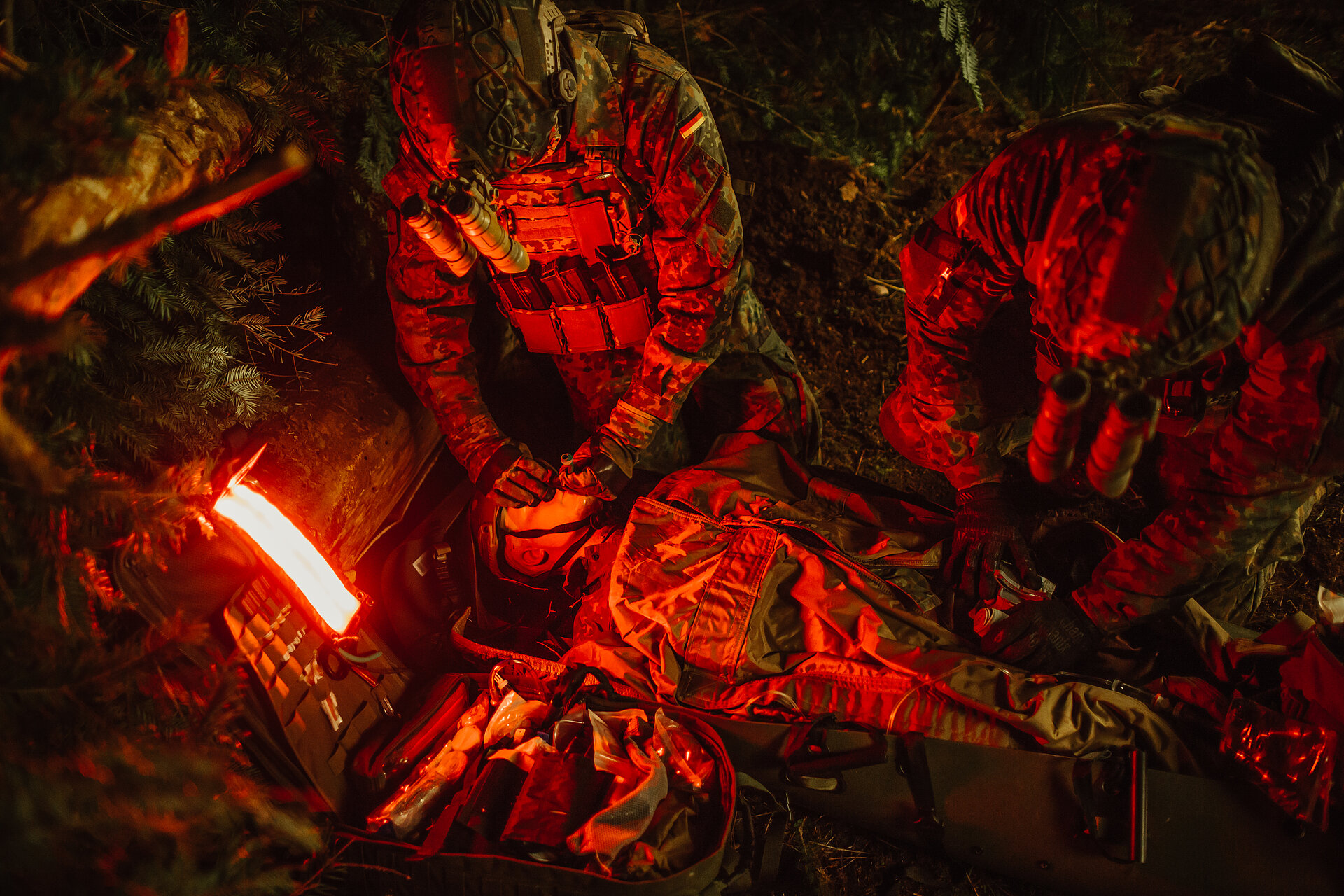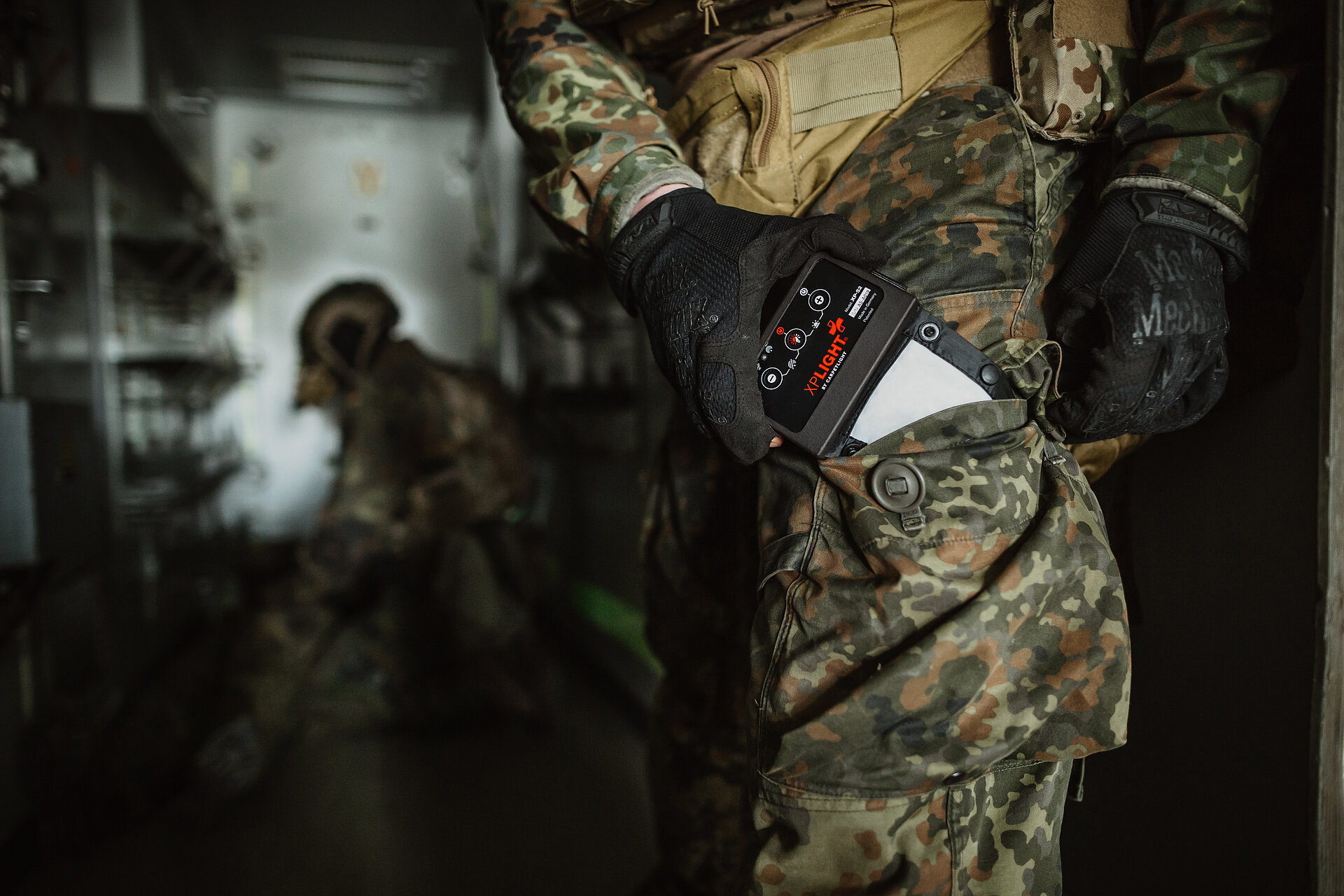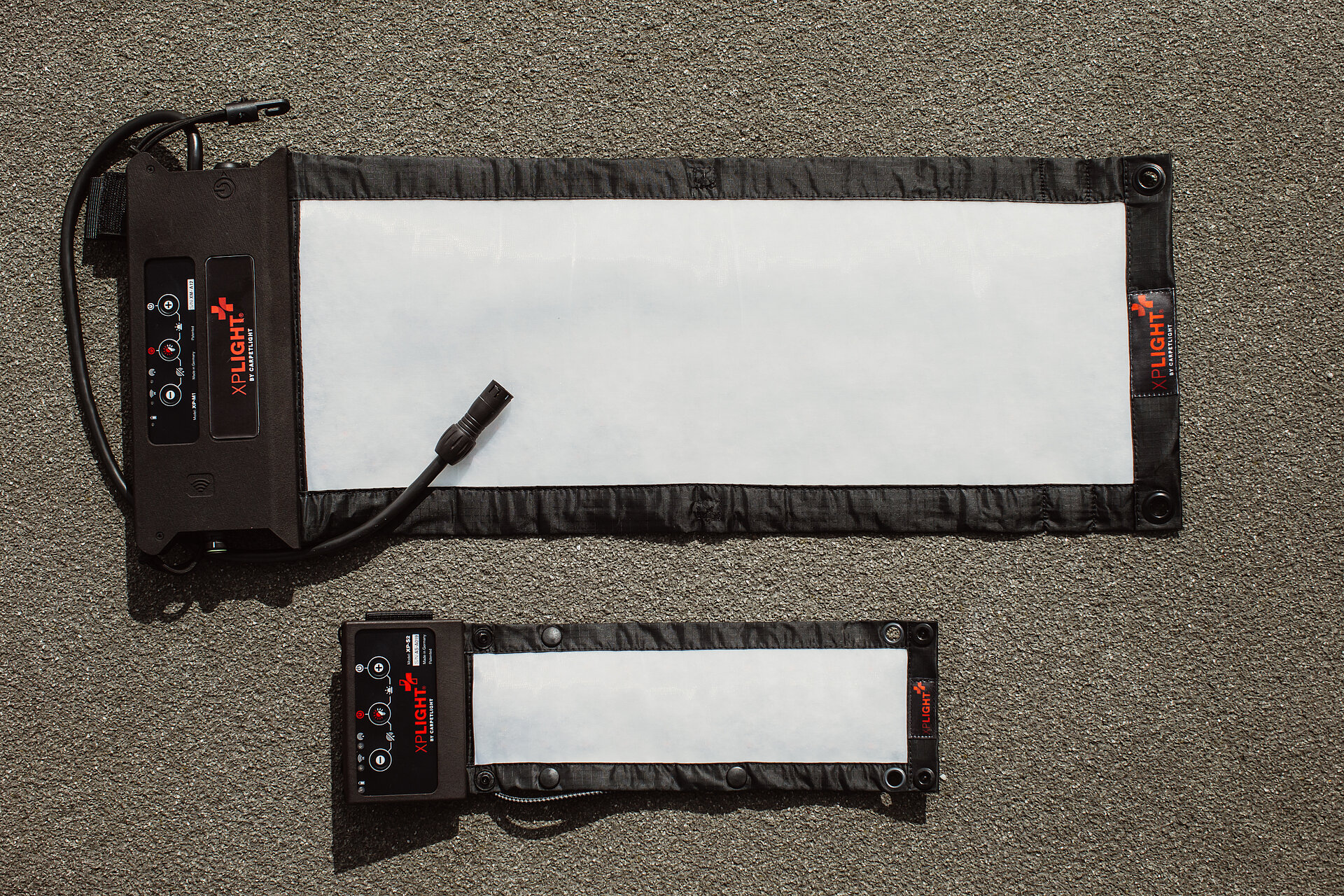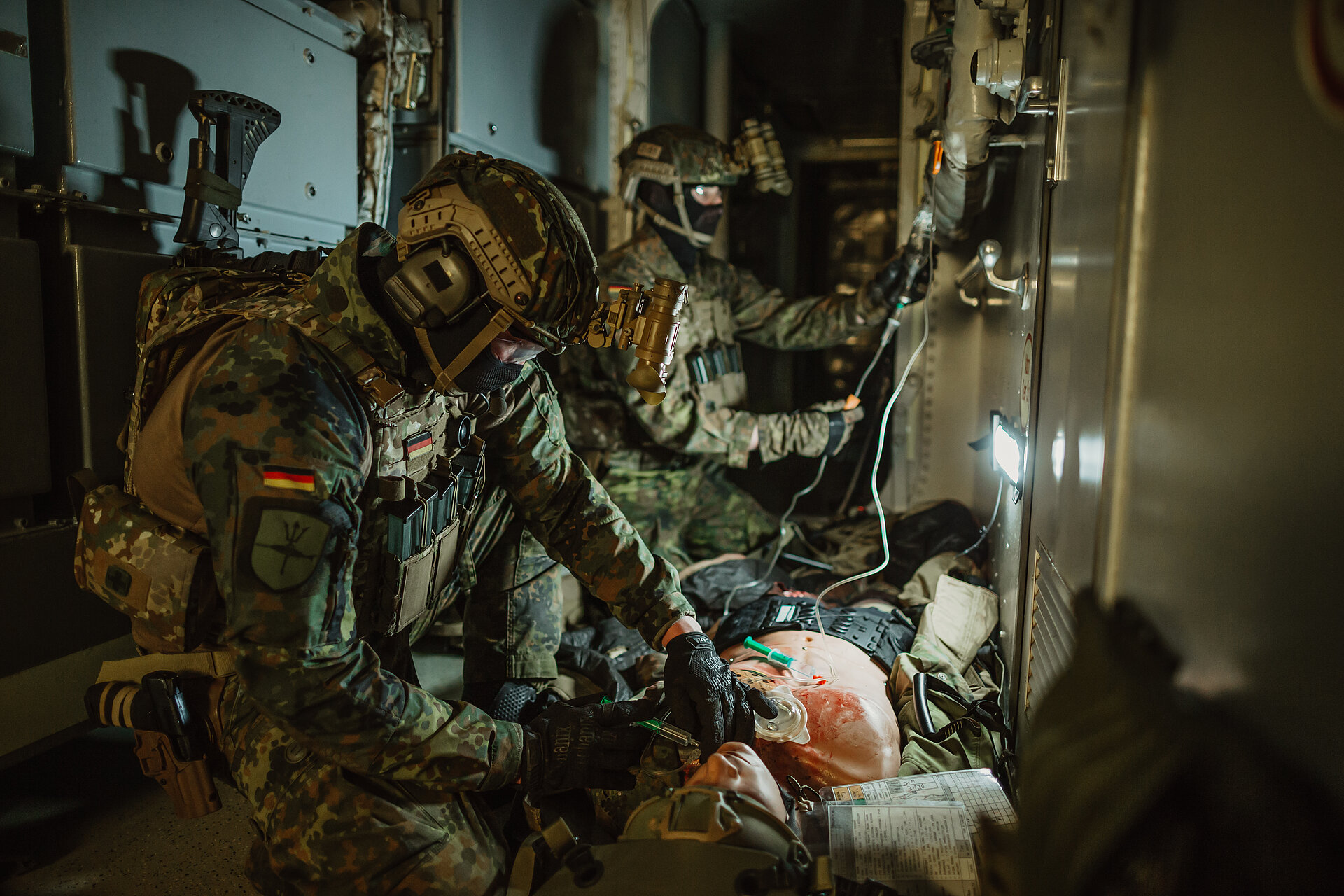The falKE system is a flexibly adaptable and reliable source of light for mobile medical units on duty. It helps paramedics treat wounded patients in low light and without an electricity supply.

Saving lives with the mobile light source faLKE
Treating wounded patients under time pressure
The Naval Special Forces Command is supported by its own paramedics during operations. These specially trained medical professionals are responsible for treating wounded or ill people, for example, aboard ships or in the harbour areas of conflict zones.
They work under great time pressure: to save lives, they must look after their patients without delay and in tactical conditions. If someone has arterial bleeding from a gunshot wound, the bleeding must be stopped immediately. This requires adequate lighting, even in improvised conditions. What makes such situations even more challenging is that the medical teams are often separated from their own forces and have no access to the terrestrial power grid. Previous solutions included tools such as head lamps, but they only shine in the direction of the wearer’s own gaze. Other tools tested also fell short in creating adequate lighting
Innovative LED mat
The Bundeswehr Cyber Innovation Hub and the Naval Special Forces Command joined forces to look for a suitable alternative that would allow paramedics to tend wounded patients rapidly and flexibly. They found a solution in a LED mat produced by a start-up from Hamburg specialising in textile light sources.
Like many of the innovations tested by the Bundeswehr Cyber Innovation Hub, the LED mat is a dual-use product. In non-military environments, it is popular among film crews for outdoor and night-time shooting, as it provides a reliable source of light even in very dark conditions.
The prototype was adapted to the needs of the Bundeswehr, and the result is falKE. (The acronym stands for ‘flexibel adaptierbare Lichtversorgung für mobile Kräfte im Einsatz’ – flexibly adaptable light source for mobile forces on duty).
Paramedic operations
When the paramedics of the Naval Special Forces Command are tending the wounded, time and independence (e.g., from the availability of energy infrastructure) are of the essence. They frequently work on their own without support. So as not to be an additional burden, the light mats not only needed to be independent from the terrestrial power grid, they also had to be extremely lightweight and compact. Made from a material that lends itself well to crumpling, bending and rolling, they can be folded up and transported easily in a backpack or the leg pocket of a soldier’s battledress.
Despite their flexibility and adjustable size, the light mats are extremely powerful and robust. They are water-resistant, which is an important property for operations in harbours or bad weather. The paramedics can attach them to surrounding objects with velcro straps, eyelets or magnets and connect them to each other in series with a cable. This makes the mats easy to set up virtually anywhere. They can draw power from a variety of sources, too: either from the integrated power pack, from the terrestrial grid using an adaptor, or from an external extension. The light mats can be used indoors and outdoors.
Digital operation through an app
The light mats are operated either directly through an integrated control unit or remotely via app. The purpose-built app is compatible with all conventional mobile devices and supports Wi-Fi and Bluetooth. It is clearly structured with a simple design. In addition to switching the light mat on and off, the app can also adjust the colour and brightness of the LEDs. This ensures that the product provides the right light in any situation: after all, lighting conditions change depending on the environment of an operation.
You can also control multiple interconnected light mats through the app. Such set-ups produce the non-dazzling, bright ambient light which the paramedics need to look after the wounded.
When the time comes to transport the patients back, the light mats can emit flashing signals and switch to infrared mode in order for the paramedics to reconnect with their own forces.
Other use cases
In addition to the use case described above, the Bundeswehr is also looking into additional applications within the scope of its innovation project. The light mats could aid in setting up command posts regardless of the time of day and lighting, for example, and they might be useful during urban combat.
Besides the Naval Special Forces Command, the Munster Training Centre and its Armoured Corps School also investigated the usefulness of the light mats by testing them during fighting in built-up areas and urban warfare involving dismounted forces. Time is a critical factor for success in both use cases, i.e., treatment of wounded patients and establishing combat readiness.
The idea behind the flexible light supply is potentially suitable for other scenarios, too. They could be used to signal the location of ground troops to aircraft, for example.
Positive feedback
The paramedics are pleased with the light mats. Thanks to the improved light supply, wounded soldiers have better odds of survival, and the app-based control system truly optimises the system.
The other users also commented that they would like to use the light mats permanently.



